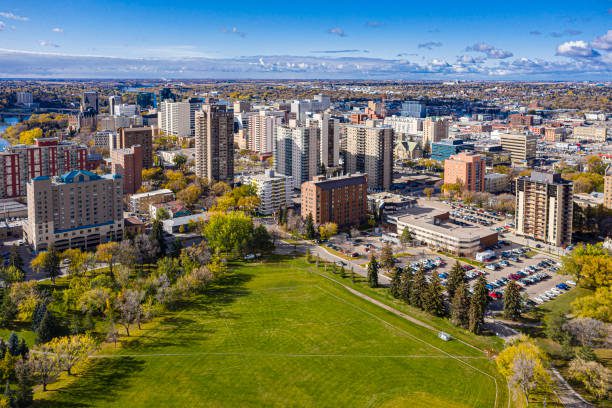Maintenance technicians are in high demand in Canada, supporting industries like manufacturing, construction, and healthcare by ensuring equipment and facilities operate efficiently. This guide outlines the steps to apply for maintenance technician jobs, including qualifications, job search strategies, and visa options for foreign workers in 2025.
Step 1: Understand the Role and Requirements
Maintenance technicians repair and maintain machinery, electrical systems, and building infrastructure. Roles vary by industry, from industrial plants to commercial buildings.
-
Key Responsibilities: Troubleshoot equipment failures, perform preventive maintenance, and install new systems.
-
Essential Skills: Knowledge of mechanical, electrical, or HVAC systems; proficiency with tools; and problem-solving abilities.
-
Qualifications: A high school diploma or equivalent is often required, plus a trade certificate or diploma in fields like industrial mechanics, electrical technology, or HVAC.
-
Experience: Employers typically seek 1–3 years of hands-on experience, though entry-level roles may accept apprenticeships.
-
Certifications: Industry-specific credentials, such as Red Seal certification for trades, enhance employability.
Step 2: Obtain Relevant Qualifications
To meet Canadian standards, ensure your qualifications align with job requirements.
-
Education: Complete a relevant program, such as a diploma in Industrial Maintenance Technology or a trade apprenticeship. Foreign credentials must be assessed by organizations like World Education Services to confirm equivalency.
-
Trade Certification: Pursue provincial certification, such as Ontario’s Certificate of Qualification for Industrial Mechanics (Millwright). The Red Seal endorsement, recognized nationwide, is highly valued.
-
English/French Proficiency: Demonstrate language skills through tests like IELTS (minimum CLB 5 for trades) or TEF Canada for French-speaking regions like Quebec.
-
Safety Certifications: Obtain certifications like WHMIS (Workplace Hazardous Materials Information System) and First Aid, often required by employers.
Step 3: Explore Visa and Immigration Options
Foreign workers need a valid work permit to work in Canada. Maintenance technicians are eligible for several visa programs.
-
Temporary Foreign Worker Program (TFWP): Requires a Labour Market Impact Assessment (LMIA) from an employer, proving no Canadian can fill the role. Apply for a work permit via Immigration, Refugees and Citizenship Canada (IRCC).
-
Express Entry: For skilled trades under the Federal Skilled Trades Program (FSTP), submit an Expression of Interest (EOI) for permanent residency. Requires a job offer or provincial nomination for higher points.
-
Provincial Nominee Program (PNP): Provinces like Alberta and British Columbia nominate technicians for PR based on labor shortages. Check provincial requirements on government websites.
-
Atlantic Immigration Program: Targets skilled workers for Atlantic provinces (New Brunswick, Nova Scotia, Prince Edward Island, Newfoundland and Labrador) with employer sponsorship.
-
Processing Time: Work permits take 2–6 months; Express Entry PR applications average 6–12 months.
Step 4: Build a Canadian-Style Resume
A tailored resume is critical for standing out to Canadian employers.
-
Format: Use a reverse-chronological format, listing recent experience first. Keep it 1–2 pages.
-
Content: Highlight technical skills (e.g., PLC programming, welding), certifications, and measurable achievements (e.g., “Reduced downtime by 20% through preventive maintenance”).
-
Keywords: Include terms from job postings, such as “troubleshooting,” “HVAC systems,” or “predictive maintenance.”
-
Cover Letter: Write a concise cover letter addressing the employer’s needs and your qualifications.
-
References: Provide professional references or state they’re available upon request.
Step 5: Search for Maintenance Technician Jobs
Canada’s job market offers opportunities in urban and regional areas.
-
Job Portals: Use platforms like Job Bank, Indeed, and LinkedIn. The Job Bank is a government-run site listing maintenance technician roles across Canada.
-
Industries: Target sectors like manufacturing (automotive, food processing), oil and gas, mining, and facilities management.
-
Key Locations: Ontario (Toronto, Windsor), Alberta (Calgary, Edmonton), and British Columbia (Vancouver) have high demand.
-
Networking: Join trade associations like the Canadian Association of Moldmakers or attend job fairs. Connect with recruiters on LinkedIn.
-
Recruitment Agencies: Agencies like Randstad and Manpower specialize in trade roles and can connect you with employers offering sponsorship.
Step 6: Apply for Jobs
Submit applications strategically to maximize success.
-
Customize Applications: Tailor each resume and cover letter to the job description, emphasizing relevant skills and certifications.
-
Follow Instructions: Adhere to application guidelines, such as submitting PDFs or using online portals.
-
Highlight Sponsorship Needs: If seeking visa sponsorship, note your eligibility (e.g., TFWP or Express Entry) in your cover letter without focusing solely on visa status.
-
Follow Up: Contact employers 1–2 weeks after applying to express continued interest, unless the posting specifies otherwise.
Step 7: Prepare for Interviews
Interviews assess technical skills and cultural fit.
-
Technical Questions: Be ready to discuss troubleshooting processes, safety protocols, or specific systems (e.g., hydraulic pumps, electrical circuits).
-
Behavioral Questions: Use the STAR method (Situation, Task, Action, Result) to describe past experiences, like resolving equipment failures.
-
Practical Tests: Some employers require hands-on assessments, such as diagnosing a machine fault or reading blueprints.
-
Research the Employer: Understand the company’s industry, projects, and values to show genuine interest.
-
Virtual Interviews: For international applicants, prepare for video interviews with a stable internet connection and professional setting.
Step 8: Secure a Job Offer and Work Permit
Once offered a job, work with the employer to obtain a work permit.
-
Job Offer Requirements: The offer must include job title, salary, and duration, meeting LMIA or visa criteria.
-
LMIA Process: The employer applies for an LMIA, proving the need for a foreign worker. Processing takes 2–8 weeks.
-
Work Permit Application: Submit your work permit application online, including the LMIA, job offer, and supporting documents (passport, qualifications). Pay the CAD 155 fee.
-
Relocation: Upon approval, arrange travel, accommodation, and a Social Insurance Number (SIN) to work legally in Canada.
Tips for Success
-
Upskill: Learn in-demand skills like automation, robotics, or energy-efficient systems to stand out.
-
Local Experience: Consider entry-level or apprenticeship roles to gain Canadian experience.
-
Safety Focus: Emphasize your knowledge of workplace safety standards, a priority in Canada.
-
Regional Preferences: Be open to jobs in smaller cities or remote areas, where demand is high and competition lower.
Industry Trends and Statistics
Job Demand
Canada expects 5,900 maintenance technician job openings by 2031, driven by industrial growth and retirements. Alberta and Ontario report the highest vacancies, with over 1,200 roles advertised monthly in 2025.
Salary Insights
The average salary for maintenance technicians is CAD 65,000 annually. Entry-level roles start at CAD 45,000, while experienced technicians in oil and gas or mining can earn over CAD 90,000.
Visa Sponsorship Trends
Over 600 employers in manufacturing and construction offered LMIAs for maintenance roles in 2024. The TFWP remains the primary route for foreign technicians, with 70% of permits processed within 10 weeks.
In-Demand Specializations
Technicians skilled in industrial automation, HVAC, or heavy equipment maintenance are prioritized. Regions like Quebec and Saskatchewan offer incentives for tradespeople willing to work in rural areas.


